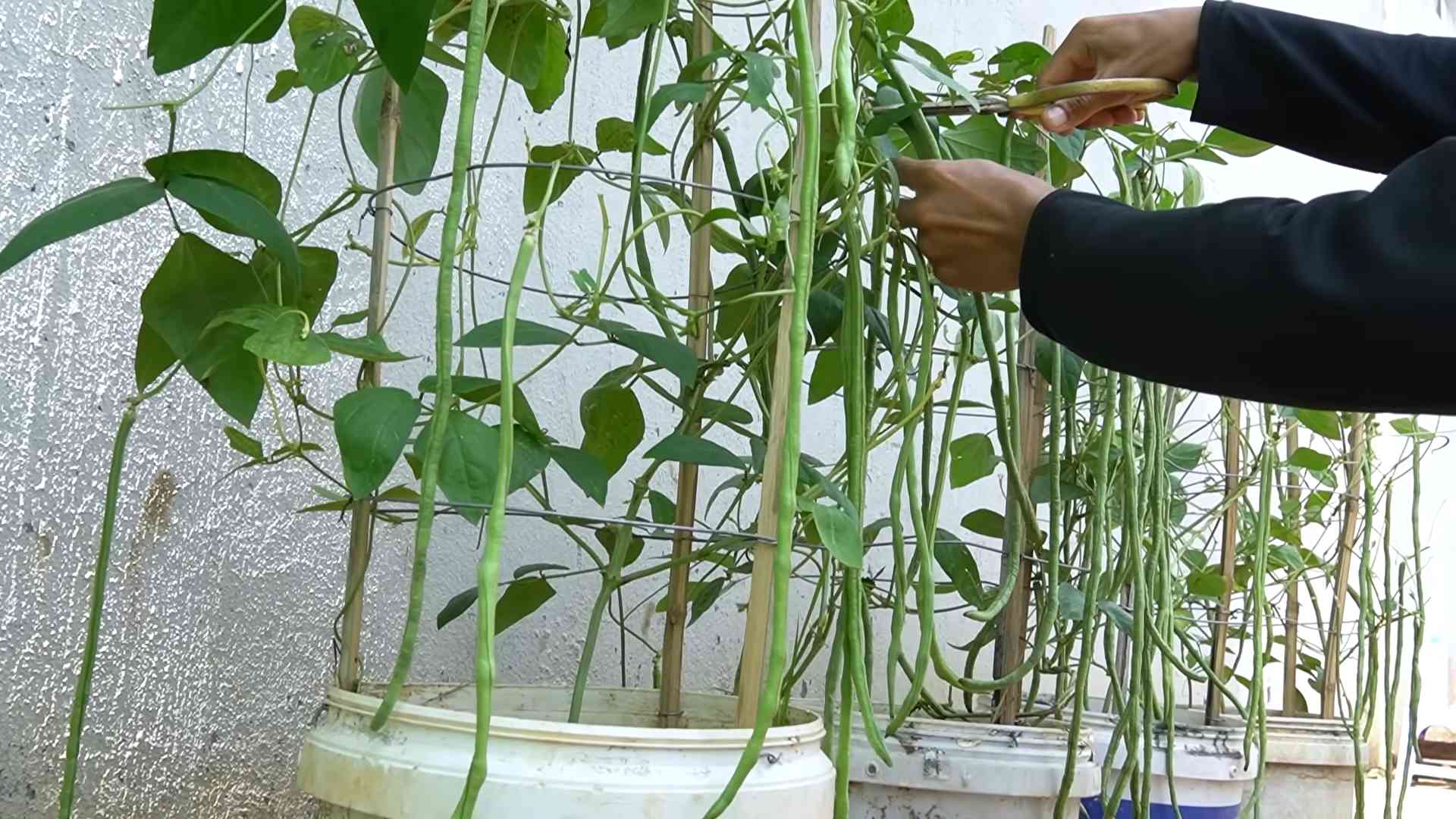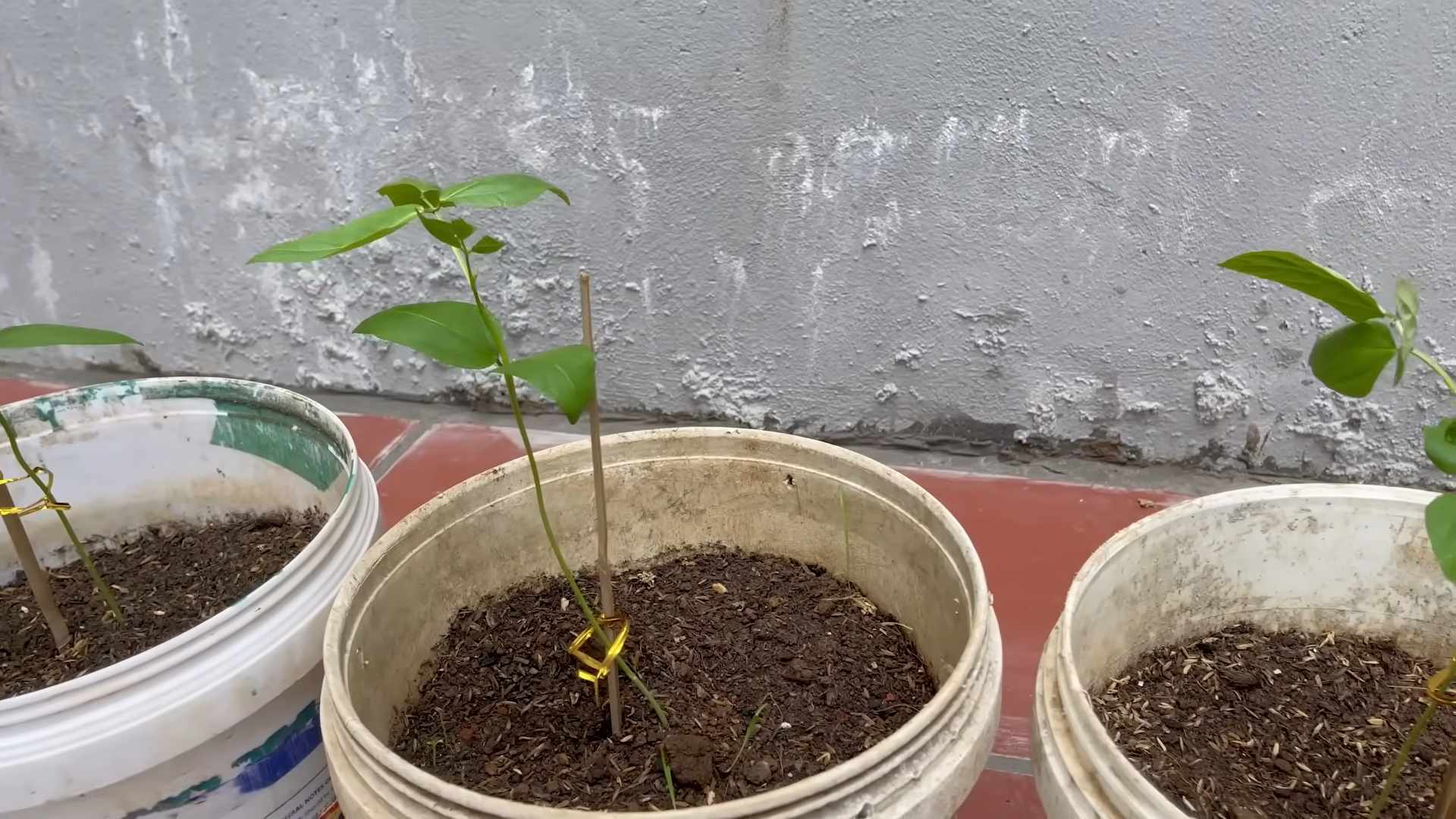Grow Long Beans Fast? Absolutely! Imagine harvesting armfuls of these delicious, slender beans from your own backyard, ready to be stir-fried, steamed, or added to your favorite curries. It’s not just a dream; it’s an achievable reality with a few clever tricks and DIY hacks. For centuries, long beans, also known as yardlong beans or asparagus beans, have been a staple in Asian cuisine, symbolizing prosperity and longevity. From bustling Vietnamese markets to serene Japanese gardens, these beans have woven their way into the cultural fabric of countless communities.
But let’s be honest, sometimes getting those beans to actually, well, grow long beans fast can feel like a challenge. Maybe your plants are struggling, the beans are stunted, or you’re just not seeing the bountiful harvest you were hoping for. That’s where this article comes in! I’m going to share my tried-and-true DIY secrets to supercharge your long bean growth. We’ll cover everything from soil preparation and support systems to watering techniques and pest control, all designed to help you maximize your yield and enjoy a truly rewarding gardening experience. Get ready to transform your garden into a long bean paradise!

DIY: Supercharge Your Long Bean Harvest!
Hey there, fellow gardeners! Are you dreaming of a bountiful harvest of long beans, those delightfully crunchy and versatile veggies? I know I am! But sometimes, patience isn’t my strongest virtue, and waiting for those beans to reach their full potential can feel like an eternity. That’s why I’ve developed a few tricks and techniques to help you grow long beans faster and more abundantly. Get ready to be amazed by the results!
Choosing the Right Variety and Location
Before we dive into the nitty-gritty, let’s talk about setting the stage for success. The right variety and location can make a world of difference.
* Variety Selection: Opt for fast-maturing long bean varieties. Some popular choices include ‘Chinese Red Noodle,’ ‘Yard Long,’ and ‘Orient Wonder.’ These varieties are known for their quick growth and high yields. I personally love ‘Yard Long’ because they’re just so impressive!
* Sunlight is Key: Long beans are sun-worshippers! They need at least 6-8 hours of direct sunlight per day to thrive. Choose a location in your garden that gets plenty of sunshine. If you’re limited on space, consider growing them in containers on a sunny balcony or patio.
* Soil Matters: Well-draining soil is crucial. Long beans don’t like to sit in soggy soil, which can lead to root rot. Amend your soil with compost or other organic matter to improve drainage and fertility. I like to add a generous helping of composted manure – it works wonders!
* Support System: Long beans are climbers, so they need a sturdy trellis, fence, or other support structure to grow on. This not only keeps the beans off the ground but also improves air circulation and makes harvesting easier. I’ve used everything from bamboo poles to repurposed metal fencing – get creative!
Step-by-Step Planting Guide
Now that we’ve covered the basics, let’s get our hands dirty! Here’s a step-by-step guide to planting long beans for faster growth:
1. Soaking the Seeds: Before planting, soak the long bean seeds in lukewarm water for 12-24 hours. This helps to soften the seed coat and speeds up germination. I usually put them in a small bowl on the kitchen counter and forget about them until the next day.
2. Starting Seeds Indoors (Optional): To get a head start, you can start long bean seeds indoors 2-3 weeks before the last expected frost. Sow the seeds in small pots or seed trays filled with seed-starting mix. Keep the soil moist and provide plenty of light. I use a grow light to ensure they get enough light, especially during cloudy days.
3. Direct Sowing: Once the soil has warmed up and the danger of frost has passed, you can direct sow the seeds in your garden. Plant the seeds about 1 inch deep and 4-6 inches apart. If you’re using a trellis, plant the seeds at the base of the trellis.
4. Watering: Water the seeds thoroughly after planting. Keep the soil consistently moist, but not waterlogged, until the seedlings emerge. I like to use a gentle watering can to avoid disturbing the seeds.
5. Thinning: Once the seedlings have emerged and have a few true leaves, thin them out to about 12-18 inches apart. This gives the plants enough room to grow and prevents overcrowding. I know it’s hard to thin out seedlings, but it’s essential for healthy growth!
Boosting Growth with Fertilizer and Nutrients
To really supercharge your long bean growth, we need to provide them with the right nutrients.
* Fertilizing: Long beans are heavy feeders, so regular fertilization is essential. Use a balanced fertilizer (e.g., 10-10-10) at planting time and then side-dress with a nitrogen-rich fertilizer every 2-3 weeks. I also like to use compost tea as a natural fertilizer – it’s packed with beneficial microbes!
* Nitrogen Fixation: Long beans are legumes, which means they can fix nitrogen from the air. However, they still benefit from supplemental nitrogen, especially during the early stages of growth.
* Foliar Feeding: Foliar feeding is a great way to provide long beans with a quick boost of nutrients. Use a diluted seaweed extract or fish emulsion and spray it directly onto the leaves. I usually do this in the early morning or late evening to avoid burning the leaves.
* Epsom Salts: Epsom salts (magnesium sulfate) can help to improve nutrient uptake and promote healthy growth. Dissolve 1 tablespoon of Epsom salts in 1 gallon of water and use it to water your long beans every 2-3 weeks. I’ve found that Epsom salts really make a difference in the overall health and vigor of my plants.
Watering and Mulching for Optimal Growth
Proper watering and mulching are crucial for maintaining consistent moisture levels and suppressing weeds.
* Consistent Watering: Long beans need consistent moisture to thrive. Water them deeply and regularly, especially during hot, dry weather. Avoid overhead watering, which can lead to fungal diseases. I prefer to use a soaker hose or drip irrigation to deliver water directly to the roots.
* Mulching: Apply a layer of mulch around the base of the plants to help retain moisture, suppress weeds, and regulate soil temperature. Organic mulches like straw, hay, or wood chips are ideal. I love using straw because it’s readily available and breaks down over time, adding nutrients to the soil.
* Weed Control: Keep the area around your long beans free of weeds. Weeds compete with the plants for water and nutrients, which can slow down growth. Hand-pull weeds regularly or use a hoe to cultivate the soil. I try to weed my garden at least once a week to prevent weeds from getting out of control.
Pruning and Training for Increased Yield
Pruning and training can help to improve air circulation, promote bushier growth, and increase yield.
* Pruning: Remove any yellowing or diseased leaves to prevent the spread of disease. You can also prune the tips of the vines to encourage branching and more flower production. I usually prune my long beans every few weeks to keep them healthy and productive.
* Training: Train the vines to climb up the trellis or support structure. Use plant ties or twine to secure the vines to the trellis. This helps to keep the beans off the ground and improves air circulation. I like to use soft plant ties that won’t damage the vines.
* Pinching: Pinch off the growing tips of the vines when they reach the top of the trellis. This encourages the plant to produce more side shoots and flowers, resulting in a higher yield.
Pest and Disease Control
Long beans are relatively pest-resistant, but they can be susceptible to certain pests and diseases.
* Common Pests: Aphids, bean beetles, and spider mites are common pests that can attack long beans. Inspect your plants regularly for signs of infestation.
* Organic Pest Control: Use organic pest control methods to control pests. Insecticidal soap, neem oil, and diatomaceous earth are effective options. I prefer to use neem oil because it’s a broad-spectrum insecticide and fungicide.
* Common Diseases: Fungal diseases like powdery mildew and anthracnose can affect long beans. Provide good air circulation and avoid overhead watering to prevent these diseases.
* Disease Control: Use a copper fungicide or sulfur spray to control fungal diseases. I always try to catch diseases early before they spread throughout the plant.
Harvesting Your Bounty
The moment we’ve all been waiting for! Harvesting your long beans at the right time is crucial for optimal flavor and texture.
* Harvest Time: Harvest long beans when they are young and tender, about 8-12 inches long. They should be firm and snap easily when bent.
* Regular Harvesting: Harvest the beans regularly to encourage continued production. The more you harvest, the more the plant will produce. I try to harvest my long beans every 2-3 days during peak season.
* Proper Handling: Handle the beans gently to avoid bruising. Store them in the refrigerator for up to a week. I like to blanch and freeze any extra beans to enjoy later in the year.
Extra Tips for Supercharged Growth
Here are a few extra tips and tricks that I’ve learned over the years to help you grow long beans even faster:
* Companion Planting: Plant long beans with companion plants like marigolds, basil, and rosemary. These plants can help to repel pests and attract beneficial insects.
* Succession Planting: Plant long beans in succession every 2-3 weeks to ensure a continuous harvest throughout the growing season.
* Watering in the Morning: Water your long beans in the morning so that the foliage has time to dry before nightfall. This helps to prevent fungal diseases.
* Observation is Key: Pay close attention to your plants and adjust your care accordingly. Every garden is different, so what works

Conclusion
So, there you have it! Growing long beans fast isn’t some unattainable gardening dream; it’s a tangible reality within your reach. By implementing these simple yet effective strategies, you’re not just planting seeds; you’re cultivating a thriving long bean haven right in your backyard. From optimizing soil conditions and providing sturdy support to mastering the art of watering and pest control, each step contributes to a bountiful harvest that will have you enjoying fresh, delicious long beans in no time.
This DIY trick is a must-try for several compelling reasons. First and foremost, it empowers you to take control of your food source, ensuring that you’re consuming fresh, organically grown produce free from harmful chemicals. Secondly, it’s incredibly rewarding to witness the fruits (or in this case, vegetables) of your labor, fostering a deeper connection with nature and a sense of accomplishment. Finally, it’s a cost-effective way to enjoy a continuous supply of long beans, saving you money at the grocery store and reducing your environmental footprint.
But the journey doesn’t end here! Feel free to experiment with different long bean varieties to discover your personal favorites. Consider companion planting with herbs like basil or marigolds to deter pests naturally and enhance the flavor of your long beans. You can also explore different trellising methods to find the one that best suits your garden space and aesthetic preferences. Perhaps you’ll even discover a new and improved method for growing long beans fast that you can share with the world!
We wholeheartedly encourage you to give this DIY trick a try. Don’t be afraid to get your hands dirty, embrace the learning process, and celebrate the small victories along the way. Remember, gardening is a journey, not a destination. And who knows, you might just discover a newfound passion for growing your own food.
Once you’ve experienced the joy of harvesting your own homegrown long beans, we’d love to hear about your experience! Share your tips, tricks, and triumphs in the comments section below. Let’s create a community of long bean enthusiasts who are passionate about growing their own food and sharing their knowledge with others. Together, we can make the world a greener, healthier, and more delicious place, one long bean at a time. So, grab your gardening gloves, plant those seeds, and get ready to witness the magic of growing long beans fast!
Frequently Asked Questions (FAQs)
What exactly are long beans, and why should I grow them?
Long beans, also known as yardlong beans, asparagus beans, or Chinese long beans, are a type of legume characterized by their exceptionally long pods, which can grow up to three feet in length. They are a popular ingredient in Asian cuisine and are prized for their crisp texture and slightly sweet flavor. Growing your own long beans offers several advantages, including access to fresh, organic produce, cost savings, and the satisfaction of cultivating your own food. Plus, they are relatively easy to grow, making them a great option for beginner gardeners.
How long does it actually take to grow long beans fast using these methods?
While the exact timeframe can vary depending on factors like climate, soil quality, and the specific long bean variety, you can generally expect to harvest your first long beans within 60-75 days of planting. By implementing the strategies outlined in this article, such as optimizing soil conditions, providing adequate support, and ensuring proper watering and fertilization, you can significantly accelerate the growth process and potentially harvest even sooner. Consistent monitoring and proactive pest control are also crucial for maximizing growth speed.
What kind of soil is best for growing long beans fast?
Long beans thrive in well-drained, fertile soil that is rich in organic matter. The ideal soil pH is between 6.0 and 7.5. Before planting, amend your soil with compost, aged manure, or other organic materials to improve its fertility and drainage. You can also add a slow-release fertilizer to provide essential nutrients throughout the growing season. Avoid heavy clay soils, as they can become waterlogged and hinder root development. If you have clay soil, consider amending it with sand and organic matter to improve its drainage.
How much sunlight do long beans need to grow fast?
Long beans require at least 6-8 hours of direct sunlight per day to grow optimally. Choose a planting location that receives ample sunlight throughout the day. If you live in a particularly hot climate, some afternoon shade may be beneficial to prevent the plants from overheating. Insufficient sunlight can lead to stunted growth, reduced yields, and increased susceptibility to pests and diseases.
What is the best way to water long beans to promote fast growth?
Consistent and adequate watering is crucial for promoting fast growth in long beans. Water deeply and regularly, especially during hot, dry weather. Aim to keep the soil consistently moist but not waterlogged. Avoid overhead watering, as it can increase the risk of fungal diseases. Instead, water at the base of the plants using a soaker hose or drip irrigation system. Mulching around the plants can also help to retain moisture in the soil.
What kind of support system do long beans need?
Long beans are climbing plants and require a sturdy support system to grow vertically. This not only maximizes space utilization but also improves air circulation and reduces the risk of diseases. Options include trellises, fences, poles, or even sturdy branches. Ensure that the support system is tall enough to accommodate the full length of the long bean vines, which can reach up to 10 feet or more. Secure the vines to the support system as they grow to encourage upward growth.
How can I protect my long beans from pests and diseases?
Long beans are susceptible to various pests and diseases, including aphids, bean beetles, and fungal infections. Regularly inspect your plants for signs of infestation or disease. Implement preventative measures such as companion planting with pest-repelling herbs like basil or marigolds. Use organic pest control methods like insecticidal soap or neem oil to control infestations. Ensure good air circulation around the plants to prevent fungal diseases. Remove any infected leaves or plants promptly to prevent the spread of disease.
What are some common mistakes to avoid when growing long beans?
Several common mistakes can hinder the growth of long beans. These include planting too early in the season, neglecting to provide adequate support, overwatering or underwatering, failing to fertilize properly, and neglecting pest and disease control. By avoiding these mistakes and following the tips outlined in this article, you can significantly increase your chances of success in growing long beans fast.
Can I grow long beans in containers?
Yes, you can successfully grow long beans in containers, provided that you choose a large enough container (at least 12 inches in diameter) and provide adequate support. Use a well-draining potting mix and ensure that the container receives ample sunlight. Water regularly and fertilize as needed. Container-grown long beans may require more frequent watering and fertilization than those grown in the ground.
What are some delicious ways to use my homegrown long beans?
Long beans are incredibly versatile and can be used in a wide variety of dishes. They can be stir-fried, steamed, grilled, or added to soups and stews. They pair well with Asian flavors like soy sauce, ginger, garlic, and chili. You can also use them in salads, pasta dishes, or as a side dish. Experiment with different recipes and flavor combinations to discover your favorite ways to enjoy your homegrown long beans.




Leave a Comment